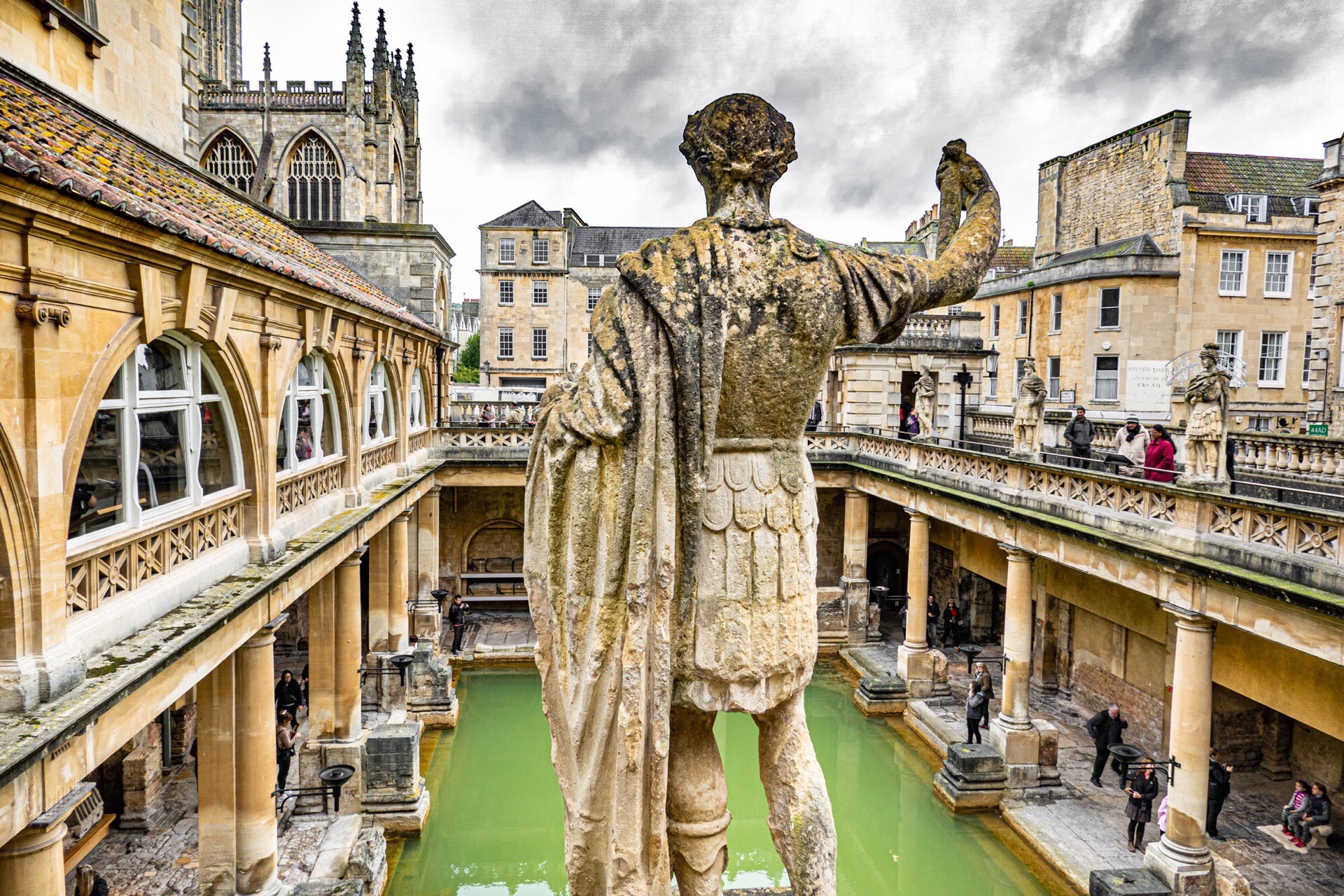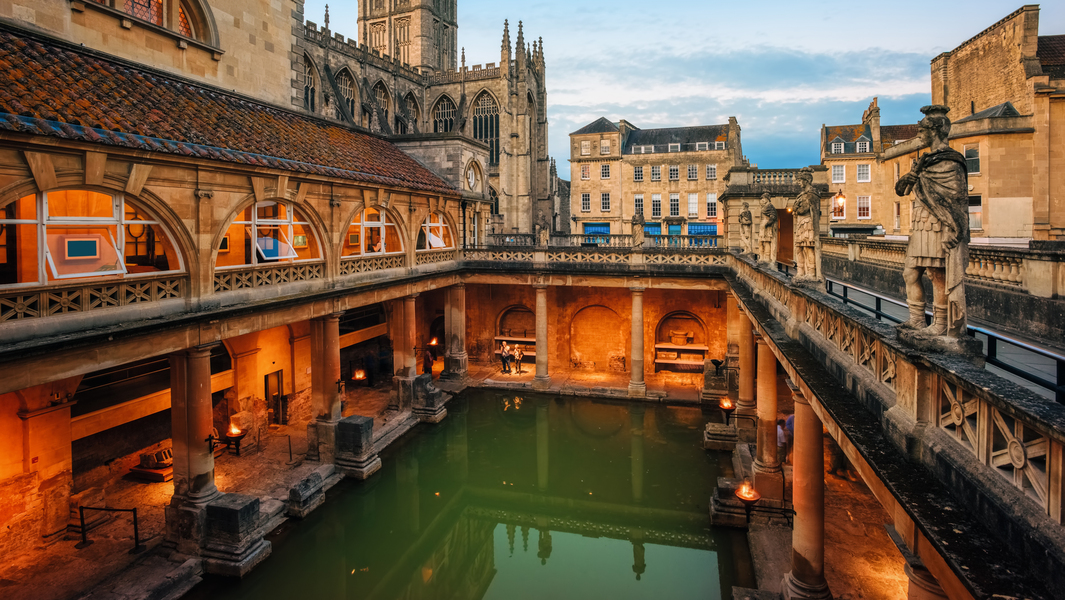Unveiling the Timeless Beauty of Bath: A Journey Through its Historical Landmarks
Source: m.media-amazon.com Introduction Bath: A Snapshot of History Nestled in the picturesque English countryside, Bath is more than just a charming city; it is a living museum that holds centuries of history within its streets. As you stroll through its cobblestoned roads, traces of its Roman, medieval, and Georgian past come to life. Personal encounters…

Introduction
Bath: A Snapshot of History
Nestled in the picturesque English countryside, Bath is more than just a charming city; it is a living museum that holds centuries of history within its streets. As you stroll through its cobblestoned roads, traces of its Roman, medieval, and Georgian past come to life. Personal encounters often evoke stories of the rich tapestry of cultures that shaped this city, making every corner feel like a page from a history book.
Significance of Bath’s Historical Landmarks
The historical landmarks of Bath are not simply structures; they are symbols of the city’s enduring legacy. These landmarks serve multiple purposes:
- Cultural Identity: They represent Bath’s evolution over time and its identity as a world-renowned spa.
- Tourism: Attracting millions each year, they boost the local economy and showcase the city’s history.
- Preservation of Heritage: They emphasize the importance of conserving architectural styles that reflect Bath’s past.
By exploring these landmarks, you embark on a journey through time, appreciating the architectural beauty and historical narratives that define Bath.

Roman Era in Bath
Aquae Sulis: Legacy of Roman Baths
Diving deep into the Roman era, Bath reveals its origins as Aquae Sulis, a significant spa destination. The Romans skillfully harnessed the natural hot springs, creating impressive baths that are still admired today. Personal visits to these ancient ruins often evoke a sense of wonder, leading many to imagine the bustling crowds of Roman citizens who once relaxed and sought healing here.
- Historical Significance: The baths were dedicated to the goddess Sulis Minerva, merging Roman and Celtic beliefs.
- Engineering Marvel: Innovative techniques allowed for advanced water management, showcasing Roman engineering prowess.
Roman Architecture in Bath
The architectural remnants of the Roman era in Bath reflect a time of grandeur and aesthetic sensibility. Strolling through the city, visitors can easily spot structures that speak to the glory of Roman design.
- Key Features:
- Columns and Arches: Elegant stone constructions that highlight strength and beauty.
- Strategic Layout: Buildings were meticulously planned with an awareness of natural surroundings.
Gazing upon these ancient edifices creates an intimate connection to the city’s storied past, making Bath a timeless testament to Roman ingenuity and culture.

Medieval and Tudor Period
Bath Abbey: An Icon of Faith and Architecture
Transitioning into the Medieval and Tudor periods, Bath Abbey stands out as a beacon of faith and architectural brilliance. This magnificent Gothic structure captivates visitors with its stunning stained glass windows and intricately carved stonework. Each visit often feels personal, as the air is filled with the echoes of centuries of prayers and celebrations.
- Historical Importance: Founded in the 7th century, it has been a spiritual hub for community gatherings.
- Architectural Features: The dramatic fan-vaulted ceiling is a testament to the skill of medieval builders.
Pulteney Bridge: Connecting the Past and Present
Another hallmark of this era is the iconic Pulteney Bridge, which elegantly spans the River Avon. Walking across it, one can appreciate how it seamlessly blends practicality with beauty, a testament to the ingenuity of its 18th-century creators. This bridge is not just a crossing; it connects different facets of Bath’s rich history.
- Unique Structure: It is one of the few bridges in the world lined with shops, enhancing its character.
- Cultural Significance: It has become a popular gathering spot, bridging the gap between Bath’s historical roots and its vibrant present.
Together, Bath Abbey and Pulteney Bridge highlight how the city’s historical narrative continues to flourish, inviting reflection and appreciation from all who visit.

Georgian Influence on Bath
The Royal Crescent: Architectural Grandeur
As we delve into the Georgian influence on Bath, the Royal Crescent emerges as a stunning example of architectural grandeur. This sweeping crescent of 30 terraced houses is a sight to behold, evoking feelings of awe and admiration. A stroll along its pristine lawns can transport you back to the 18th century, where society’s elite gathered for leisure and socializing.
- Design Features: The Georgian style showcases symmetry, elegant lines, and large windows.
- Cultural Significance: Today, it serves as both a residential area and a prime tourist attraction, encapsulating Bath’s luxurious past.
The Circus: A Harmonious Urban Design
Just a short walk from the Royal Crescent lies the Circus, another hallmark of Georgian design. This circular space is a masterclass in harmonious urban planning, drawing visitors with its unique blend of architecture and landscaping.
- Distinctive Layout: The Circus consists of three curved segments framed by impressive Georgian buildings.
- Community Hub: It acts as a gathering place, inviting both locals and visitors to appreciate its beauty.
Together, the Royal Crescent and the Circus demonstrate how Georgian architecture not only shaped the visuals of Bath but also redefined the city’s social landscape, inviting exploration and admiration.

Victorian Era and Beyond
Victoria Art Gallery: Showcasing Artistic Heritage
Transitioning into the Victorian era, Bath embraced an artistic revival with the establishment of the Victoria Art Gallery. This charming venue not only celebrates local talent but also features works from renowned artists, making it a delightful stop for art lovers. Browsing through the gallery often evokes a sense of connection to the artistic movements that shaped the city’s culture.
- Diverse Collection: The gallery hosts paintings, sculptures, and contemporary art.
- Community Engagement: Regular exhibitions and events foster a vibrant artistic community.
Thermae Bath Spa: Modern-Day Relaxation in a Historical Setting
Just a short stroll from the gallery, you’ll find the Thermae Bath Spa, where the ancient practice of bathing meets contemporary wellness. This modern spa brings together the historical significance of Bath’s hot springs and the luxurious experience of relaxation.
- Unique Experience: Guests can enjoy rooftop baths overlooking the city, blending history with serenity.
- Health Benefits: The mineral-rich waters are touted for their therapeutic properties, echoing the past.
Together, the Victoria Art Gallery and Thermae Bath Spa illustrate how Bath harmoniously marries its rich heritage with modern advancements, inviting visitors to experience the best of both worlds.

Preservation Efforts and UNESCO Recognition
Conservation of Bath’s Heritage
As Bath flourished into the modern era, significant efforts emerged to preserve its unique heritage. Local organizations and communities have rallied together to safeguard the historical essence of this city. Walking through Bath often gives a sense of how dedicated these efforts are.
- Restoration Projects: Numerous buildings have undergone meticulous restoration to maintain their original charm.
- Community Involvement: Volunteers play a vital role in conservation initiatives, fostering a shared sense of pride.
UNESCO World Heritage Site Status
In recognition of its cultural significance, Bath was awarded UNESCO World Heritage Site status in 1987. This accolade underscores the city’s importance and encourages further preservation.
- Global Recognition: The UNESCO status attracts tourists and scholars alike, enhancing Bath’s international profile.
- Sustainable Development: The designation has led to comprehensive plans for maintaining and integrating modern facilities without compromising historical integrity.
Together, Bath’s conservation efforts and UNESCO recognition illustrate the city’s commitment to preserving its remarkable history while embracing a vibrant future.

Exploring Bath Today
Jane Austen Centre: Celebrating a Literary Connection
As we transition to exploring modern Bath, the Jane Austen Centre stands out, celebrating the author’s profound connection to this charming city. Visitors are often enchanted by the interactive exhibits that shed light on Austen’s life and works. Personal visits can evoke a sense of walking through her stories, with Bath appearing as a vibrant backdrop for her characters.
- Engaging Exhibits: The centre offers displays of costumes, letters, and artifacts from Austen’s time.
- Literary Events: Regular events and talks attract book lovers and scholars, fostering a shared appreciation for her work.
Fashion Museum: Retracing Fashion Evolution in Bath
Just a short walk from the centre is the Fashion Museum, which invites guests to delve into the history of style. This museum showcases a wide array of clothing from the 18th century to the present, celebrating Bath’s role as a fashion hub.
- Diverse Collection: With over 100,000 items, the exhibits reflect changing trends and social influences.
- Interactive Experience: Visitors can even try on clothing from various eras, making history come to life.
Together, the Jane Austen Centre and the Fashion Museum exemplify Bath’s commitment to celebrating its rich cultural heritage, offering an immersive experience for both local and international visitors.






